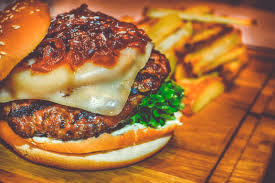In his book, In Defense of Food, Michael Pollen identifies what he deems the “Western Diet” as a primary culprit for a myriad of America’s health concerns. While I can recognize the validity of some of Pollen’s issues with the American diet, grouping all “Western Diets” together is to paint the variety of cultures and diets in the west as some homogenous beast. European diets not only diverge from American diets but also from one another, and when reading Pollen’s summation of a “Western Diet” I found it to be in conflict with much of what I know about the French diet and their food culture. Perhaps this discontinuity is why Americans have a whole subgenre of literature devoted to the secrets of how the French stay so fit. Pollen’s assessment of the issues of portion size, a lack of vegetables, and the disappearance of food culture seem most in conflict with the “French Diet”.
One of the most belabored grievance with American food culture is portion control. Portion sizes have grown over the decades, and current “standard” portions in typical American meals are in stark contrast with most of the world. France is no exception to this disparity in portion and has become almost infamous in American culture. Eating French cuisine or at a French styled restaurant brings to mind images of smaller sized plates and portions, though for many people it also means higher quality food. But who cares if they’re eating less if it means they are still eating unhealthily?

Typical American cuisine.
When many people think of the French diet they think of wine, cheese and baguettes, but this stereotype is equally as accurate as the American image of Happy Meals and Twinkies. More diverse meals, with a greater incorporation of vegetables is a better representation of French dining.

French cuisine example
Your smaller portion of meat comes with a helping of fresh vegetables. From fine dining to school lunches, French cuisine is better at introducing a variety of healthy vegetables into a round, but not too large meal.
Finally, the French differ from Americans in their approach to meal times. Eating is a cherished activity in the French culture. Whether it is a time for friends, family, or just to relax and enjoy, meals are not seen as something to be rushed through on the way to the next activity. Much of America views food as the fuel for out lives, something to be consumed as quickly as possible so as not to interrupt the rush of life. The French have maintained a strong culture around food, it is meant to be savored and appreciated, there is no Puritanical denial of pleasure in the French food culture, as Pollen suggests in the American view. Perhaps this laissez-faire attitude towards life and food gives the French time to feel full before they’ve devoured their entire meal, or perhaps there is more time to think about what one is actually eating. No matter the reasoning it seems to have healthier results than the American “food as fuel” mentality.
Whether it be that there is less to eat, healthier options, or enjoyment and community in the French diet. France is doing something right, creating healthier food relationships and people. If we are unable to throw out or whole food system, maybe the French example can help usher in a more Enlighted approach to eating in an industrial food world.
